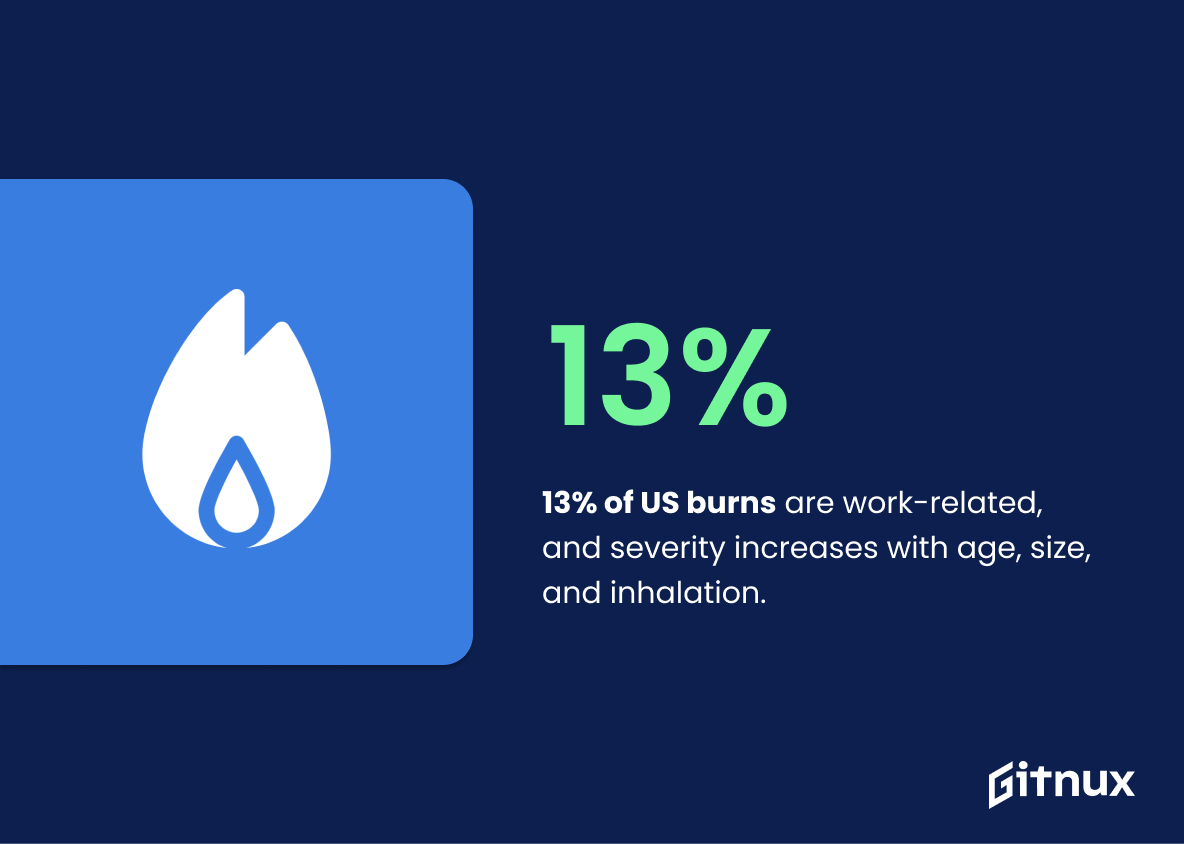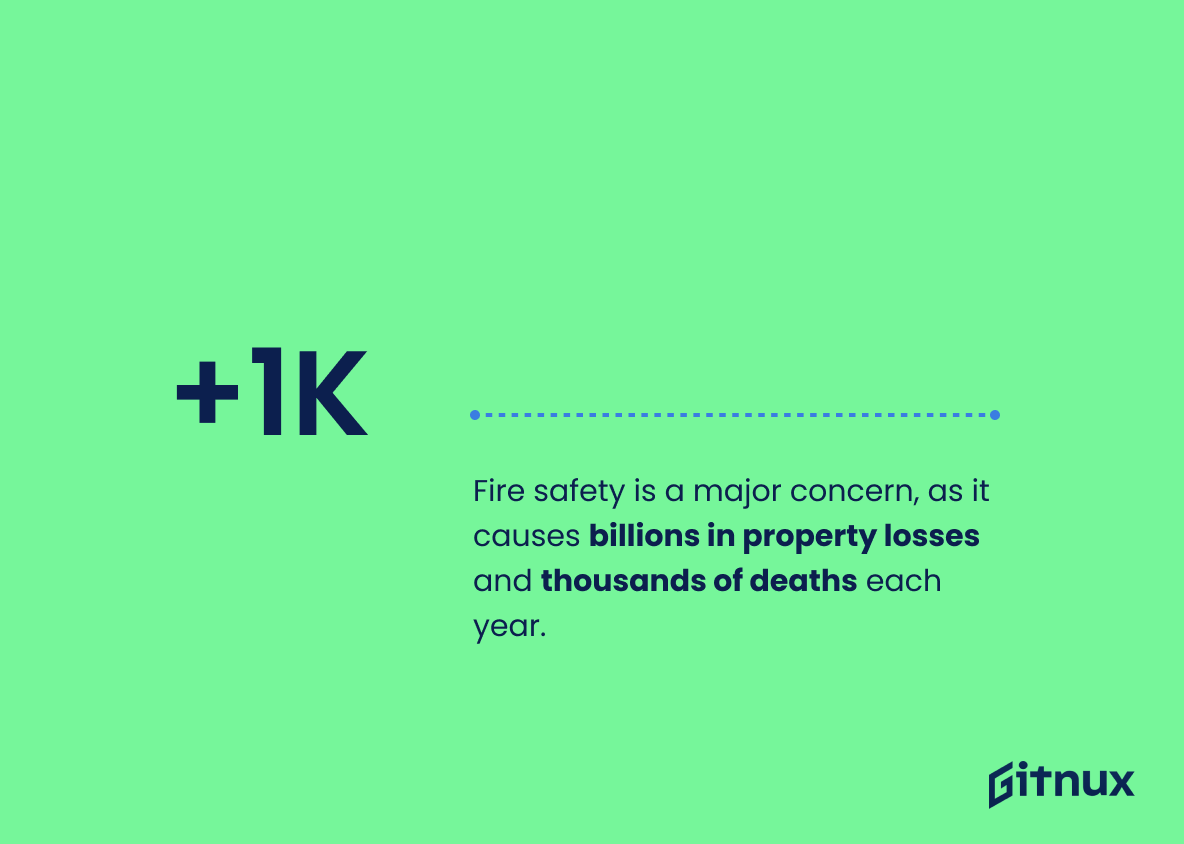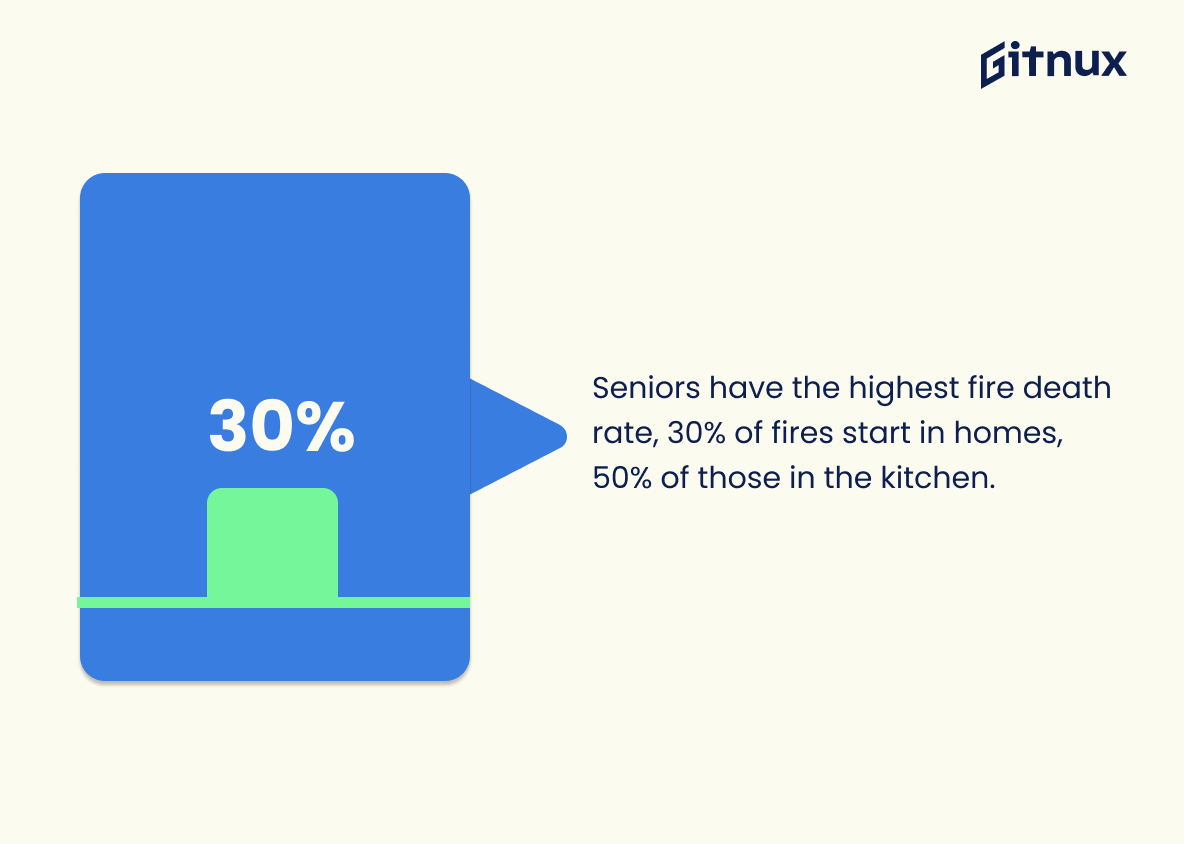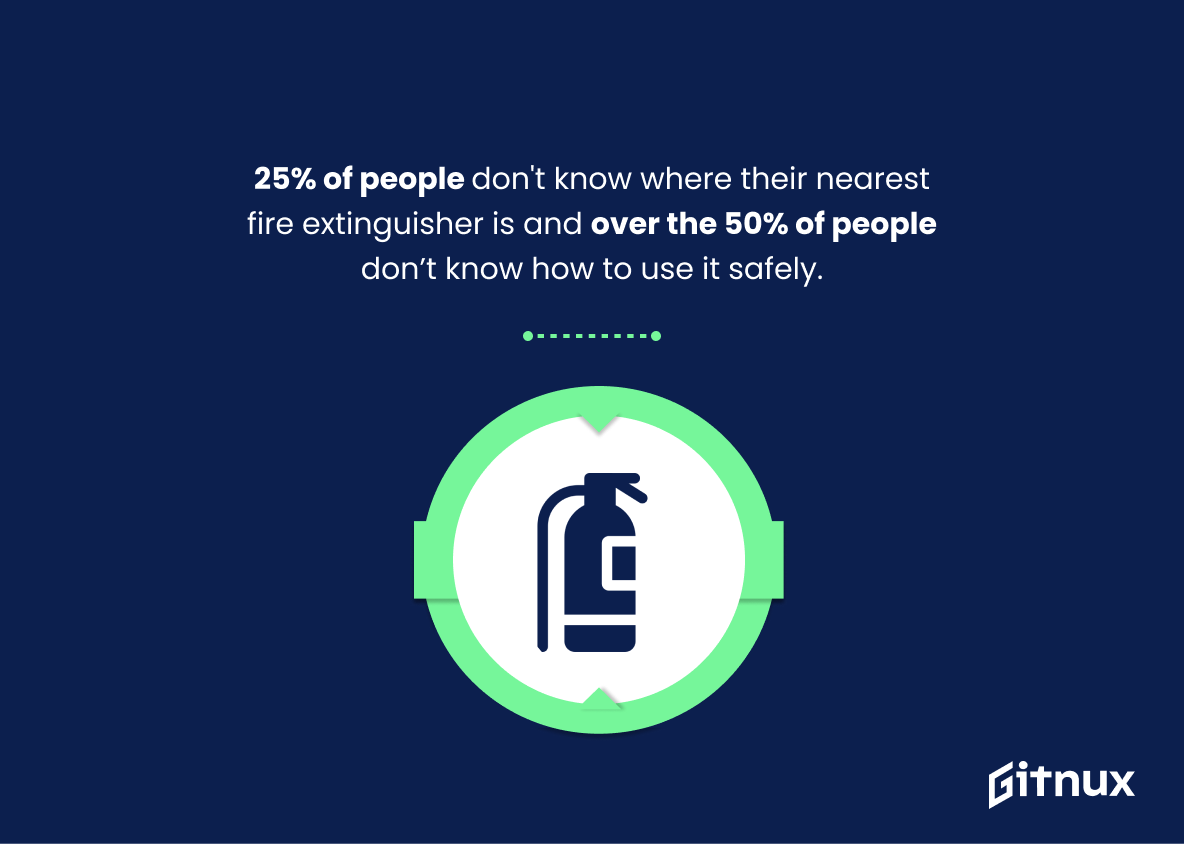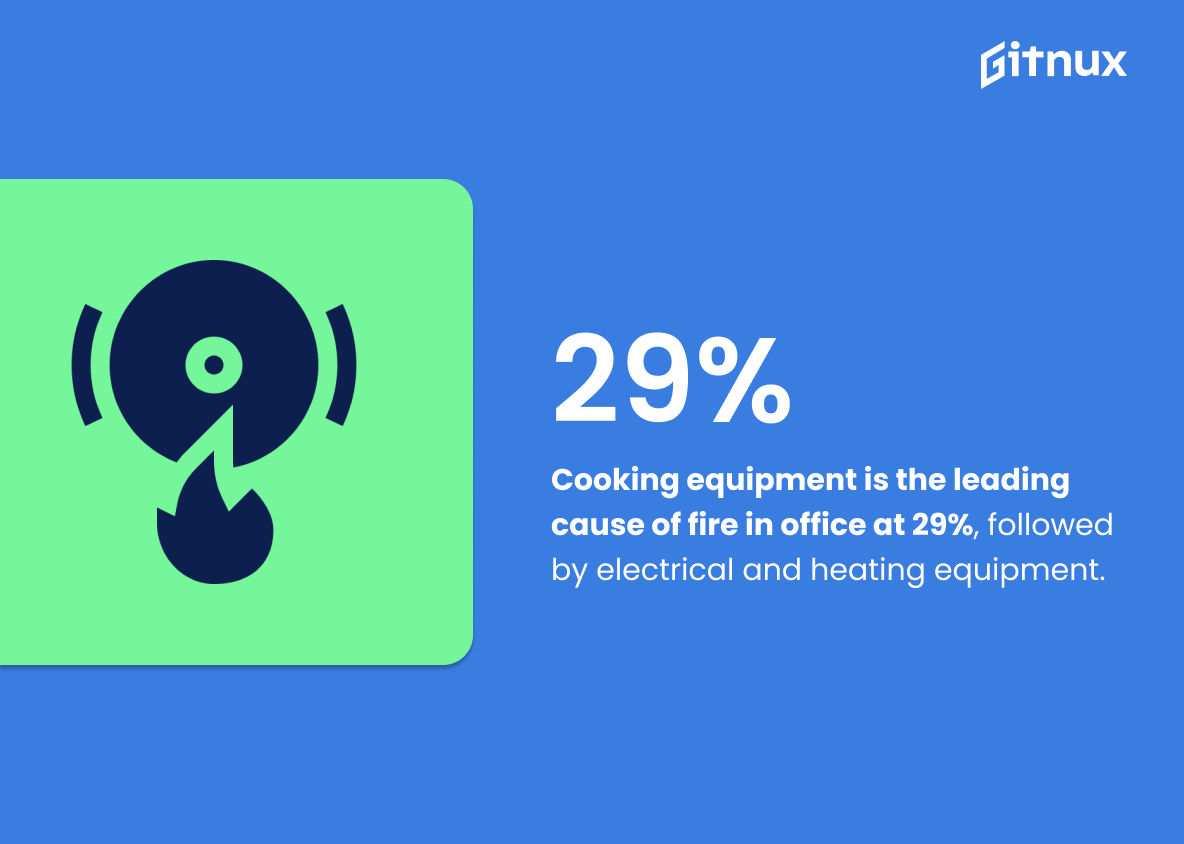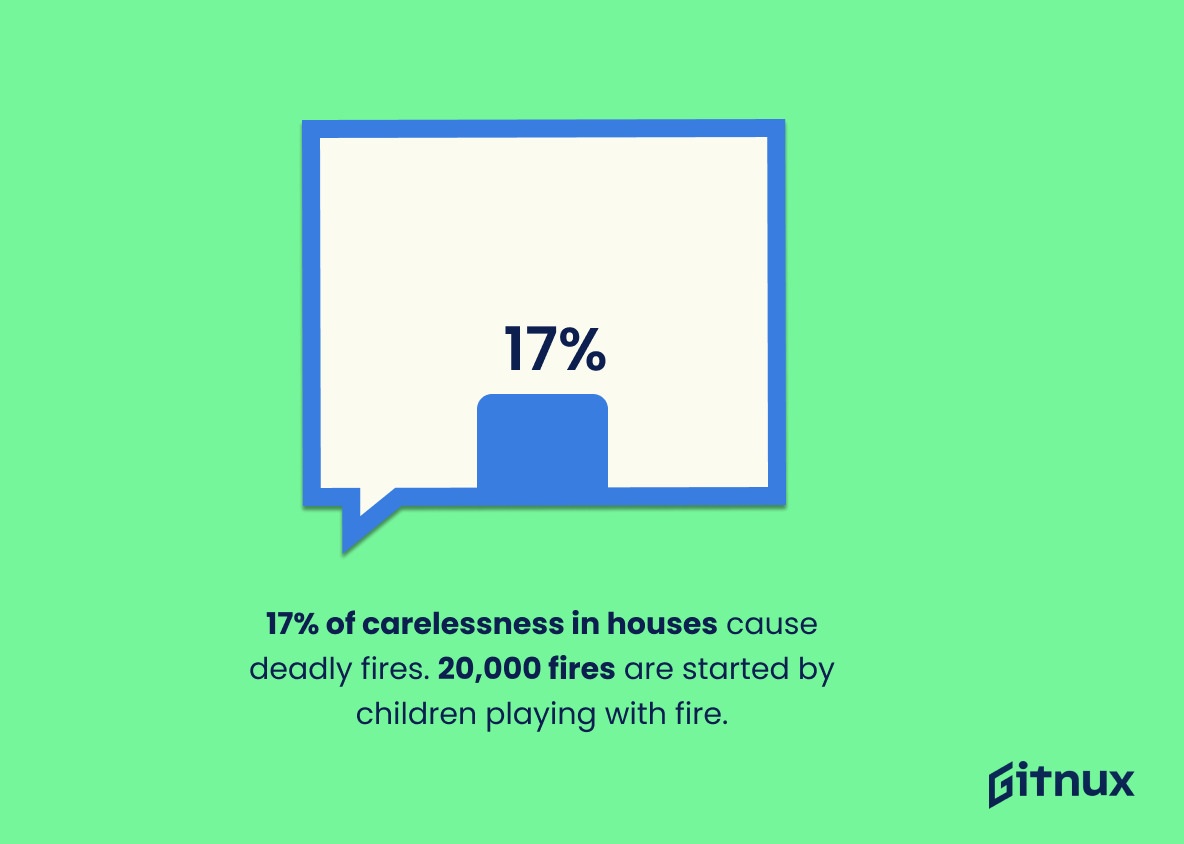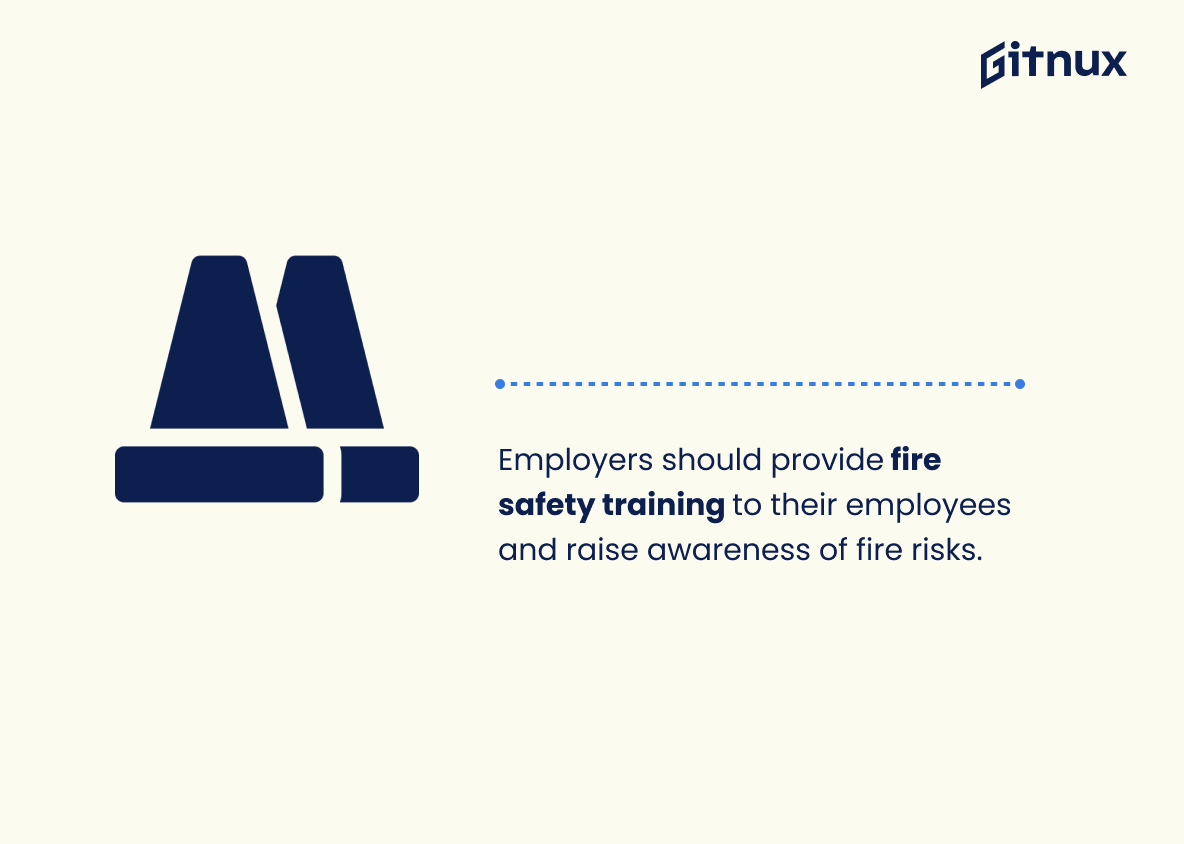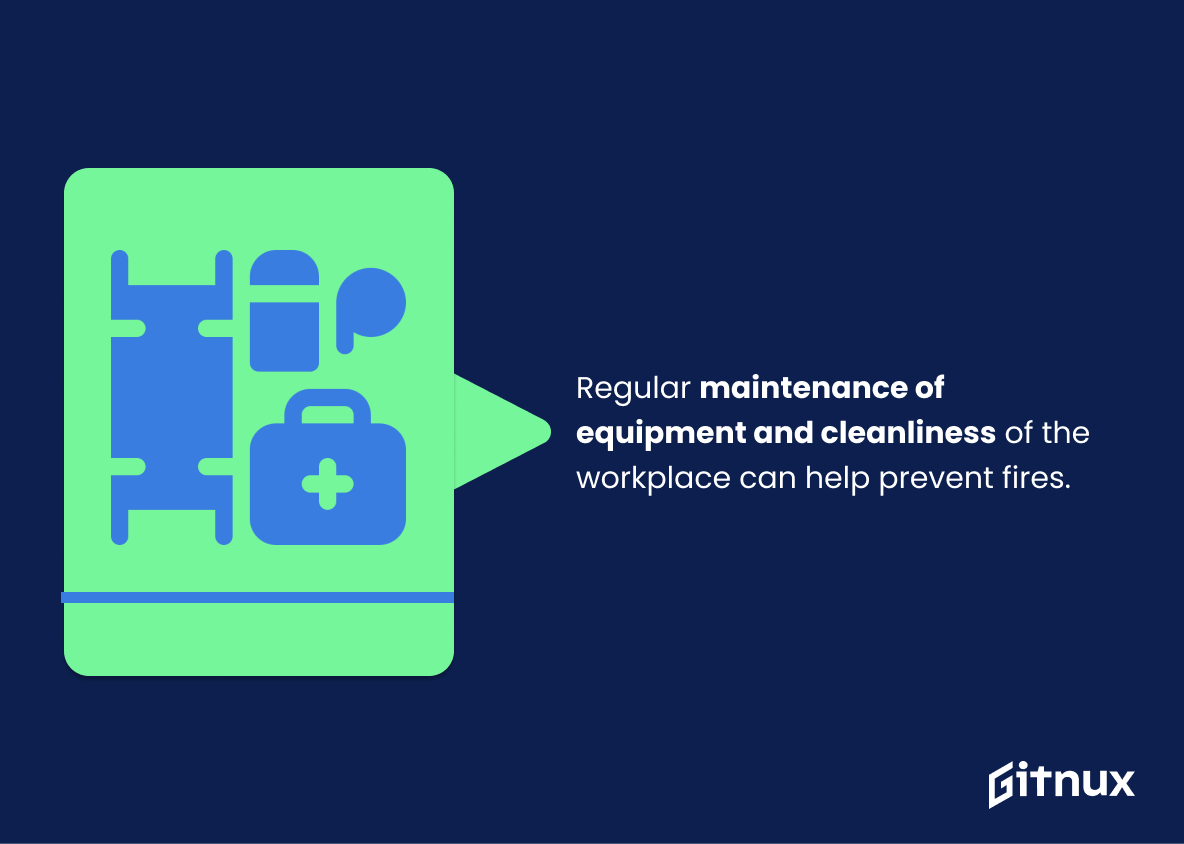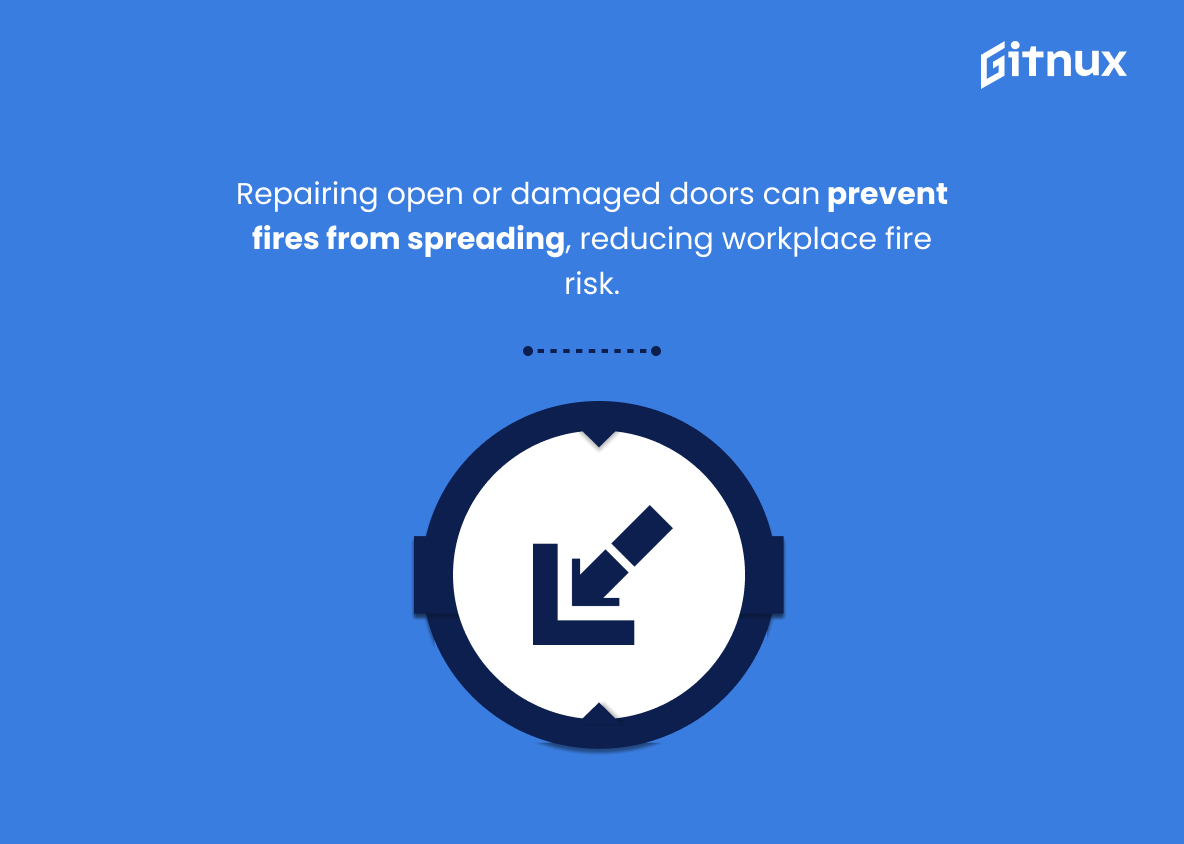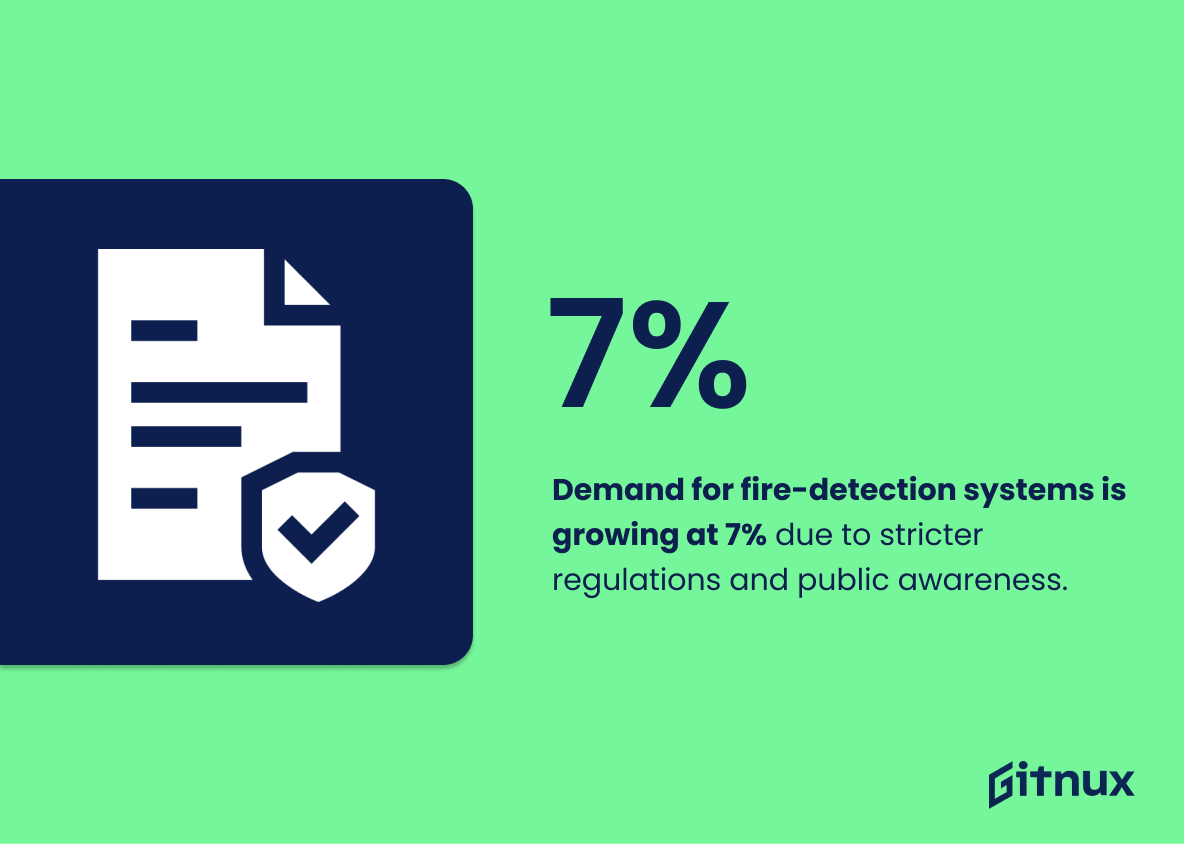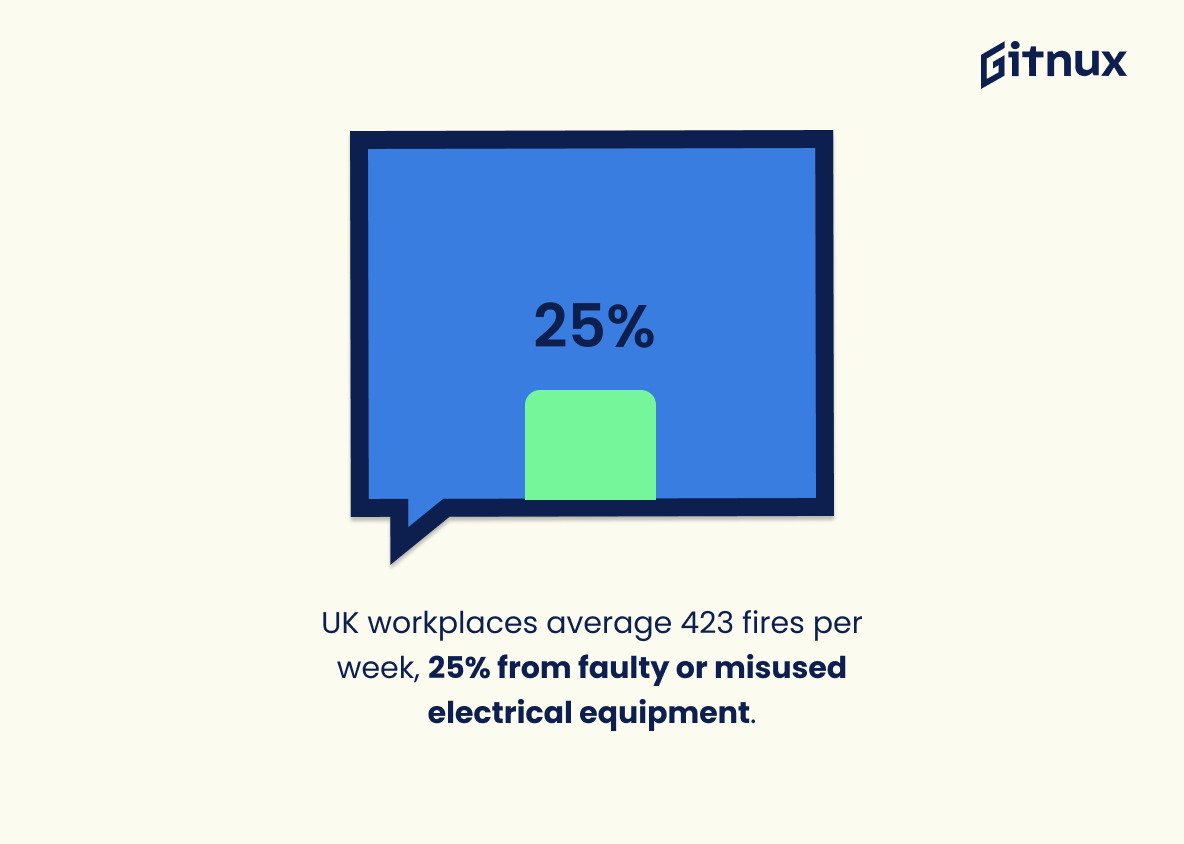Fire safety in the workplace is an incredibly important issue, and it’s essential that employers take the necessary steps to protect their employees from the dangers of fire. Unfortunately, workplace fires still occur, and it’s important to understand the statistics behind them.
In this blog post, we’ll take a look at the latest workplace fire statistics, and discuss what employers can do to reduce the risk of fire in their workplace.
Workplace Fire: The Most Important Statistics
Less than 25% of people can locate their nearest fire extinguisher, less than 50% feel confident operating one, and over 50% operate them incorrectly or dangerously.
Demand for fire-detection systems is growing at a rate of 7% annually due to increased regulations and public awareness.
Workplace Fire: Statistics Overview
13% of all burn injuries in the US are work related, and the severity of injury increases with age, size, and inhalation injury.
This highlights the importance of workplace safety measures. It shows that workplace fires can have serious consequences, and that the risk of serious injury increases with age, size, and inhalation injury. As such, employers should take steps to ensure that their workplaces are safe and that employees are properly trained in fire safety.
8% of all burns are work-related, resulting in $2.3 billion in property damage, 22% of workplace fires are electrical, 5-10 arc flash accidents occur daily, and 16% of oil and gas fatalities are due to fires and explosions.
Those numbers show the prevalence of workplace fires and the associated costs and fatalities that can result from them. They also highlight the importance of workplace safety and fire prevention measures to reduce the risk of workplace fires and the associated costs and fatalities.
Fire Safety Statistics
Fire safety is a major concern, as 0.22% of deaths in the world are due to a fire, with 3,170 deaths each year in the US alone. In 2018, the US suffered $25.6 billion in property losses due to fire, and children aged 15 and under accounted for 9.3% of total fire fatalities.
Senior citizens have the highest fire death rate of all age groups, and 30% of all fires are residential home fires, with 50.7% of those starting in the kitchen.
Pets accidentally start about 1,000 home fires every year, which shows the importance of fire safety in all areas, including the workplace, in order to reduce fatalities and property losses.
Less than 25% of people can locate their nearest fire extinguisher, less than 50% feel confident operating one, and over 50% operate them incorrectly or dangerously.
Accidents like these can lead to dangerous situations in the event of a fire. If people are not aware of the different types of fire extinguishers and how to use them correctly, they may not be able to put out a fire effectively. This can lead to increased risk of injury or death in the event of a fire.
Cooking equipment is the leading cause of fire in office properties at 29%, followed by electrical distribution and lighting equipment, heating equipment, intentional, smoking materials, exposure, and electronic office equipment.
In 2020, there were 3,500 civilian deaths due to a fire in the US, with 300 of those deaths being children under 14.
17% of fatal residential fires are caused by carelessness, and 20,000 fires are started by children playing with fire each year. Additionally, 25% of smoke alarm failures with a deadly outcome occur due to a dead battery.
With this information, everyone should acknowledge the importance of fire safety in the home, as well as the need for employers to ensure that their workplaces are equipped with working smoke alarms and other fire safety measures.
Fire Security in Companies
It also emphasizes the need for employers to provide fire safety training to their employees, as well as to ensure that their employees are aware of the risks associated with fires in the workplace.
Proper disposal of trash, accessible fire equipment, regular fire drills, and smoke detectors are important to mitigate workplace fire risks. By ensuring proper disposal of trash, having accessible fire equipment, and conducting regular fire drills, employees can be better prepared to respond to a fire if one were to occur.
Additionally, having smoke detectors in place can alert employees to the presence of a fire and help to minimize the damage caused by it.
Regular maintenance of equipment and cleanliness of the workplace can help prevent fires.
It is important to take preventative measures to reduce the risk of fires in the workplace. Regular maintenance of equipment and cleanliness of the workplace can help reduce the risk of combustible dust buildup, which can be fuel to fires.
Additionally, repairing open or damaged doors can help prevent fires from spreading. Taking these preventative measures can help reduce the risk of workplace fires.
Alternative fuel sources are more popular than open flame sources, with electricity being the most popular form of power. The use of alternative fuel sources and electricity reduces the risk of workplace fires caused by open flame sources.
Demand for fire-detection systems is growing at a rate of 7% annually due to increased regulations and public awareness.
This confirms that businesses are increasingly recognizing the need for reliable fire-detection systems to protect their employees and property from potential fires. This increased demand for fire-detection systems can help to reduce the number of workplace fires and the associated losses.
In the UK, there are an average of 423 workplace fires per week, with 25% of these caused by faulty or misused electrical equipment.
Therefore, workplace safety should be of high importance and there is a need for employers to ensure that all electrical equipment is properly maintained and used correctly in order to reduce the risk of workplace fires.
Conclusion
In conclusion, workplace fires are a serious hazard that can cause significant damage to property, injury, and even death. It is important for employers to take the necessary steps to ensure their workplace is safe and compliant with fire safety regulations.
By staying informed of the latest workplace fire statistics, employers can better understand the risks and take the necessary precautions to protect their employees and property.
References
1. MCR Safety: Workplace Stats, zitiert im Februar 2023. (Quelle)
2. Frontline Data Solutions: Workplace Fire Safety Tips, zitiert im Februar 2023. (Quelle)
3. Comfy Living: Fire Safety Statistics, zitiert im Februar 2023. (Quelle)
4. Fire and Safety Australia: Workplace Fire Statistics, zitiert im Februar 2023. (Quelle)
5. NFPA: US-Structure in Office Properties, zitiert im Februar 2023. (Quelle)
6. Safe at Last: Fire Safety, zitiert im Februar 2023. (Quelle)
7. Frontier Fire Protection: 10 Way to prevent Fire, zitiert im Februar 2023. (Quelle)
8. JLA: How to prevent Fire Hazards in the Workplace, zitiert im Februar 2023. (Quelle)
9. Fire Rescue: 3 Trends that are changing the fire environment, zitiert im Februar 2023. (Quelle)
10. IFP Mag: Modern Trends and Developments in Fire Detection, zitiert im Februar 2023. (Quelle)
12. First Mats: Fire Safety Statistics, zitiert im Februar 2023. (Quelle)
ZipDo, cited June 2023: Workplace Fire Statistics
